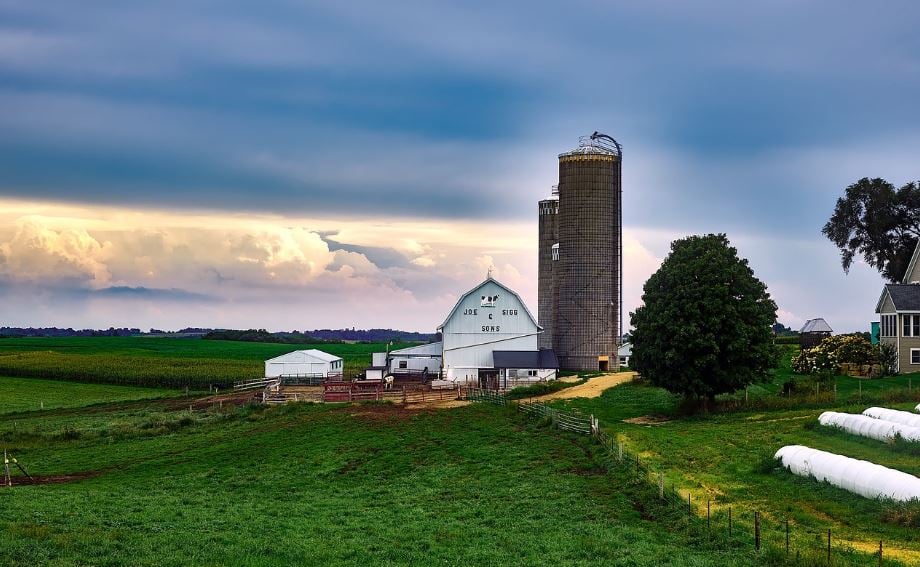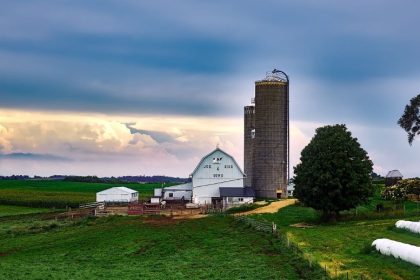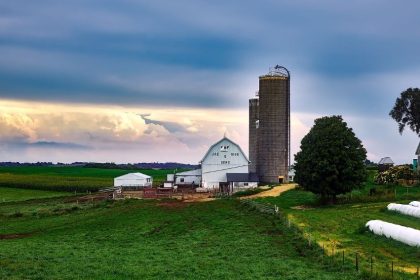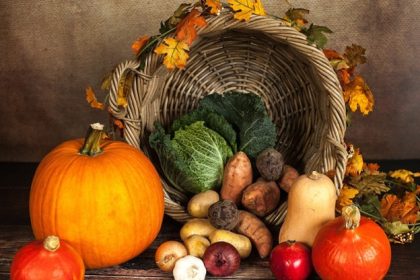Farm Bill Expected to Take Some Time, but ‘We’ll Get There,’ Policy Expert Says

WASHINGTON — After three weeks of what even newly minted House Speaker Mike Johnson, R-La., concedes was a time of “tumult,” the House is once again working on legislation to fund the government, support U.S. allies abroad and, not least, pass a farm bill.
At a press conference Thursday with other Republican leaders, Johnson spoke a lot about the “great feeling of esprit de corps amongst House Republicans” at the moment, saying the conference is not only “unified,” but also “energized.”
“Everybody watched what happened with Republicans over the past — you all walked through the valley with us,” Johnson said to the assembled reporters.
“But we came out even stronger and, I’m telling you, right now, this group is ready to govern. And we have begun that already in earnest,” he added.
What the speaker didn’t wade into were any specifics in regard to pending legislation that needs to pass quickly like the new farm bill, the multiyear law that governs an array of agricultural and food programs, but which lapsed at the end of the 2023 fiscal year.
To get a sense of where things stand, The Well News caught up Thursday with Sam Kieffer, vice president of public policy for the American Farm Bureau Federation.
The first question we asked was how the agricultural community viewed the three weeks of paralysis and infighting that began with the historic ouster of one House speaker and, finally, the installation of another, while it was anxiously awaiting the passage of legislation that will guide farming and ranching and conservation efforts for the next five years.
“Well, it certainly provided some uneasiness across the country,” Kieffer said. “I think it’s fair to say that there were many folks who were scratching their heads and some who were even a little frustrated by what they saw going on. I mean, these are the elected officials that we sent to Washington to work.
“But ultimately, they got it figured out and, you know, it’s often said that democracy is messy, and those three weeks showed just that,” he said.
“Now, having said that, it appears the House is back on track, and that a majority in the House is motivated to get things moving,” Kieffer added. “And we are ready to work with them to help them accomplish good things with the funding bills, to keep the government going and, obviously, to get to a farm bill.”
In all fairness, the impasse over the speakership in the House Republican Conference did not delay the farm bill.
Though the existing farm bill did expire at the end of September at a time when the House GOP was filtering through speaker designees, Kieffer said, “there was little expectation the new farm bill would be in place by then.”
“What the three-week delay did was create a bit of uncertainty. And the longer it was, the more anxious folks got,” he said.
“Fortunately, Speaker Johnson has gone a long way toward expelling that uncertainty. One of the first things he indicated to his peers was that getting the farm bill done in the House in December is a priority. And that’s a positive sign.”
If the House does follow through on what appears to be the speaker’s timetable, that chamber’s version of the new farm bill will likely pass by mid-December. In practical terms, that means the Senate will likely not take action on its version of the bill until January, and then the two chambers will have to negotiate and iron out the differences between the two bills.
Once that’s done, both chambers will have to pass the revised version before it can be sent on to the president for his signature.
“It’s going to take a good bit of time,” Kieffer predicted. “Not forever, but certainly several weeks, perhaps even a few months.”
Because the farm bill is a complicated omnibus package covering an array of agricultural and food programs over several years, funding for various provisions falls away at different times, with some programs losing federal backing right away, while others go on in perpetuity.
As a result, the question of who feels the pain of there not being a farm bill changes over time.
“It is a complicated bill,” Kieffer said. “It’s quite a mix of temporary authorizations, permanent law, and there are various sunset provisions scattered throughout.
“So, yes, the farm bill did expire at the end of the fiscal year, Sept. 30, but most of the farm safety net bills work along what we call a crop year.
“So when it comes to, say, the ARC and PLC programs, those growers aren’t going to see any difference. And even folks harvesting spring crops, things that are going into the ground now, won’t be hugely impacted right away,” Kieffer said.
The Agriculture Risk and Price Loss Coverage programs provide financial protections to farmers from substantial drops in crop prices or revenues and are vital economic safety nets for most American farms.
“So long as the government is functioning, if there are any payments to be made under those programs, they will be made,” Kieffer said. “Because that authorization is already there, that funding is already there.”
The Agriculture Risk Coverage program provides income support tied to historical base acres, not current production, of covered commodities.
Under the program, payments are issued to farmers and livestock growers when the actual county crop revenue of a covered commodity is less than the program’s guarantee for the covered commodity.
Price Loss Coverage payments are issued when the effective price of a covered commodity is less than the respective reference price for that commodity.
The effective price equals the higher of the market year average price or the national average loan rate for the covered commodity.
“I mean, people who are harvesting spring wheat, if there’s no farm bill by then, will start experiencing some challenges,” Kieffer said. “For instance, it might make it more difficult for them to get a market loan for their crop when they’re trucking it to market.
“But the first group to feel the anxiety related to not having a timely farm bill is going to be your dairy farmers, your dairy producers, because dairy doesn’t have a season. It’s year-round,” he said.
“So beginning Jan. 1 we have what a lot of folks in the past referred to as the ‘dairy cliff’ kick in. What that means is that the Dairy Margin Coverage Program is no longer authorized or funded and we revert back to a Depression-era law, which is parody pricing.”
The Dairy Margin Coverage Program is another safety net program overseen by the U.S. Department of Agriculture that helps producers manage changes in milk and feed prices.
But by law, if a farm bill for some reason lapses, the program is supposed to end and the country would be forced to revert back to an early 1940s agriculture policy.
In short, dairy farmers would lose the support and protection offered by the margin coverage program and the law would require the federal government to stabilize prices by taking milk off the market through milk purchases.
“That’s an outcome no dairy producer or consumer wants to see,” Kieffer said.
With a looming, theoretical deadline of early December for passage of the House version of the farm bill, an obvious thing to wonder about is just how much more work has to go into it.
While a three-week hiatus from work in the House may not have done much in terms of altering the anticipated schedule for passage, could it have affected what provisions are included and whether something gets left out?
Kieffer grew silent for a moment.
“Well,” he said, finally, “I think anything can happen.
“I mean, it is, after all, a legislative body, composed of elected officials who want to do well by their constituents,” he said. “That being said, in the House, I know House Agriculture Committee Chairman Glenn Thompson, R-Pa., has been working very hard, along with his committee staff, to find out what the Republican and Democratic members of the committee wanted and needed.
“They’ve also been working on this throughout the year, doing a bunch of federally sanctioned farm bill hearings and field hearings and listening sessions, and they’ve been visiting with growers at farm events and even their homes … to see what kind of changes folks wanted to see and felt were necessary.
“Remember too that even though the legislative body that is the House was essentially paralyzed for three weeks without a speaker, committee staff and individual members kept their pens working, hashing out the language of the bill,” he said.
“And it is my understanding that if and when the House leadership picks a day for the floor vote, the House Ag Committee is ready to roll.”
Asked to list the top two or three or four things the federation wanted to see in the farm bill, Kieffer said the biggest “ask” was “first and foremost that we get the farm bill accomplished.”
“We realize that the necessity of the calendar makes it clear that some kind of extension of the last farm bill be put in place, so we don’t experience what I describe in the dairy arena, where we could suddenly revert back to Depression-era law,” he said.
“At the same time, the extension is a means to an end, not the end itself,” Kieffer continued. “We need a new farm bill, and the sooner Congress gets to it, the better.
“As far as specific improvements or changes are concerned, I think the main thing we want is to make sure there are some additional investments made to the safety net, particularly in regard to crop insurance programs,” he said.
“Farmers across the country have seen inflation impacts on their livelihood, their families, their checkbooks, just like every other American household,” he said. “Fuel costs for agriculture have increased significantly. The price of fertilizer at one point was 300% higher than it was just before and during COVID.
“Now that’s a significantly higher input custom, which puts even more pressure on the already slim margins that growers are facing. So that’s been a priority for us. … 2018, when the last farm bill was passed, many not seem like a long time ago, but in the five years since we’ve gone through a long period of significant inflation, we’ve gone through a very uncomfortable and tumultuous time with the pandemic, and we’ve got some geopolitical uncertainty, which has illustrated, among other things, the need for global food security.
“When you consider all of that, you want to make sure that you’ve got farms that are able to make it past a difficult year due to dramatic price fluctuations or natural disasters or some unforeseen event, and so that’s why we’ve been calling for an increased investment in the safety net aspects of the farm bill,” Kieffer said.
“We also want to make sure that crop insurance programs are not only continued but given the opportunity to grow,” he continued. “More and more farmers are relying on crop insurance as a mechanism to make sure that they can manage their own risk. And we want to expand some crop insurance programs, especially to crop growers who have just the same risk as corn and soy growers, but don’t have the same kind of coverage.
“Beyond that, we’ve got priorities throughout the farm bill. For instance, we want to make sure that we’re able to continue to feed the vulnerable populations in our own communities and across the country, and we want to make sure that we continue to invest in agricultural research, through land grant universities and cooperative extension.
“You know, there’s a lot of private research going on, but we have not done a good job as a nation of investing in the public research that has, frankly, set this country apart from others,” he said. “But in the last several decades, other countries have been investing in agricultural research at a much higher rate than the U.S. and we need to make sure that we don’t get left behind.”
With that, the conversation turned back to Kieffer’s suggestion that there might need to be some kind of stopgap farm bill extension to keep programs funded and authorized until the next real farm bill is finished.
How difficult might that be to get done? Kieffer preferred to be optimistic.
“It is my observation that the House appears ready to govern,” he said. “That being said, the margins are thin, both in the House and in the Senate. So the leadership in both chambers need to be very strategic about how they approach each piece of legislation.
“I fully anticipate interest in the farm bill and a possible temporary extension to be bipartisan, particularly at the committee level. Now, as far as what will happen on the floor where you have a rule that allows for lots and lots of amendments … I think there’s some uncertainty there.
“The thing about the farm bill is it has always had bipartisan support. And yes, the route to final passage is sometimes stop and go, but at the end of the day, I think there continues to be bipartisan interest in both chambers of getting a farm bill done.
“Now, as far as what the actual, final farm bill looks like, or what vehicle leadership will use to pass a farm bill extension, I can’t say, but I think both will be shaped by how much interest the leaders of the respective chambers have in the bipartisanship for that vote.”
As optimistic as he tried to be, Kieffer readily acknowledged there could be stumbling blocks and battles to come over the farm bill before it reaches final passage.
“I think the mood in the chamber as they’re discussing and negotiating each individual procession will be an important factor as to how things go,” he said. “As we saw both during the recent debt ceiling conversation — and during previous interactions of the House — when it came to USDA and FDA funding bills, we saw a desire to go in and tinker with nutrition programs and spending.
“I expect to see some of that happening again in the House, just because of the nature of its makeup, but at the same time we’re hearing loud and clear from Sen. Debbie Stabenow, D-Mich., chair of the Senate Agriculture Committee, that she’s committed to keeping the bulk of those programs as is.
“At the same time, Chairman Thompson in the House also remains committed to making sure that the nutrition programs continue along with the farm programs,” he said. “Now, is there room for improvement in any government program? Sure. And if the past is prologue, I believe we’ll see a desire to make some improvements in some areas in the nutrition program, particularly in the House.”
Kieffer went on to say that how each chamber approaches nutrition will likely be the biggest difference between the Senate and House versions of the bill.
“I think we saw that during the debt ceiling conversation, and we saw it in discussions of the agriculture and FDA appropriations bills, so that’s not a surprise,” he said. “I think we’ll also see differences emerge in the conversations about how conservation programs can be tweaked and improved.”
Kieffer noted that Thompson’s district lies partially in the Chesapeake Bay region, calling the area, “in many ways, a microcosm for the utilization of USDA conservation programs for multiple improvements on the ground.”
“The thing is, agriculture across the country is different depending on where you go, so while having a national conservation program is great from an intentions perspective, there are those who’d like to see more an ability to make some tweaks on the local level incorporated into those programs. And I think we may see those conversations occur in the House.
“In the Senate, particularly with the recent investments made through the Inflation Reduction Act, I think we’re likely to see more of a commitment to just maintaining those programs and level of funding without a whole lot of change,” he said.
Of course, if Kieffer is correct and the Senate doesn’t take up the farm bill until January, that will mean final negotiations over the package will take place against the backdrop of the presidential primaries.
Asked how that — and the congressional campaigns coming in the second half of the year — might shade the farm bill’s final passage, Kieffer tried to remain optimistic.
“Congress has a habit of going through some turbulence in order to get to final passage, but in the end, historically, support has always been bipartisan and Congress has been able to come together and agree on a farm bill.
“Now, in asking that question, you make a valid point: The longer it takes to get to final passage of a farm bill, the more difficult it may be, the deeper we get into the primary season. But I remain optimistic that the House and Senate committee chairs and ranking members remain committed to working diligently to get it done.
“And again, we’ve seen Speaker Johnson express a desire to get it done. Remember, elected officials certainly want to be able to go back home and tell their constituents what they’ve accomplished and the farm bill would be a great opportunity for many of them to share,” said Kieffer.
Dan can be reached at [email protected] and @DanMcCue
























